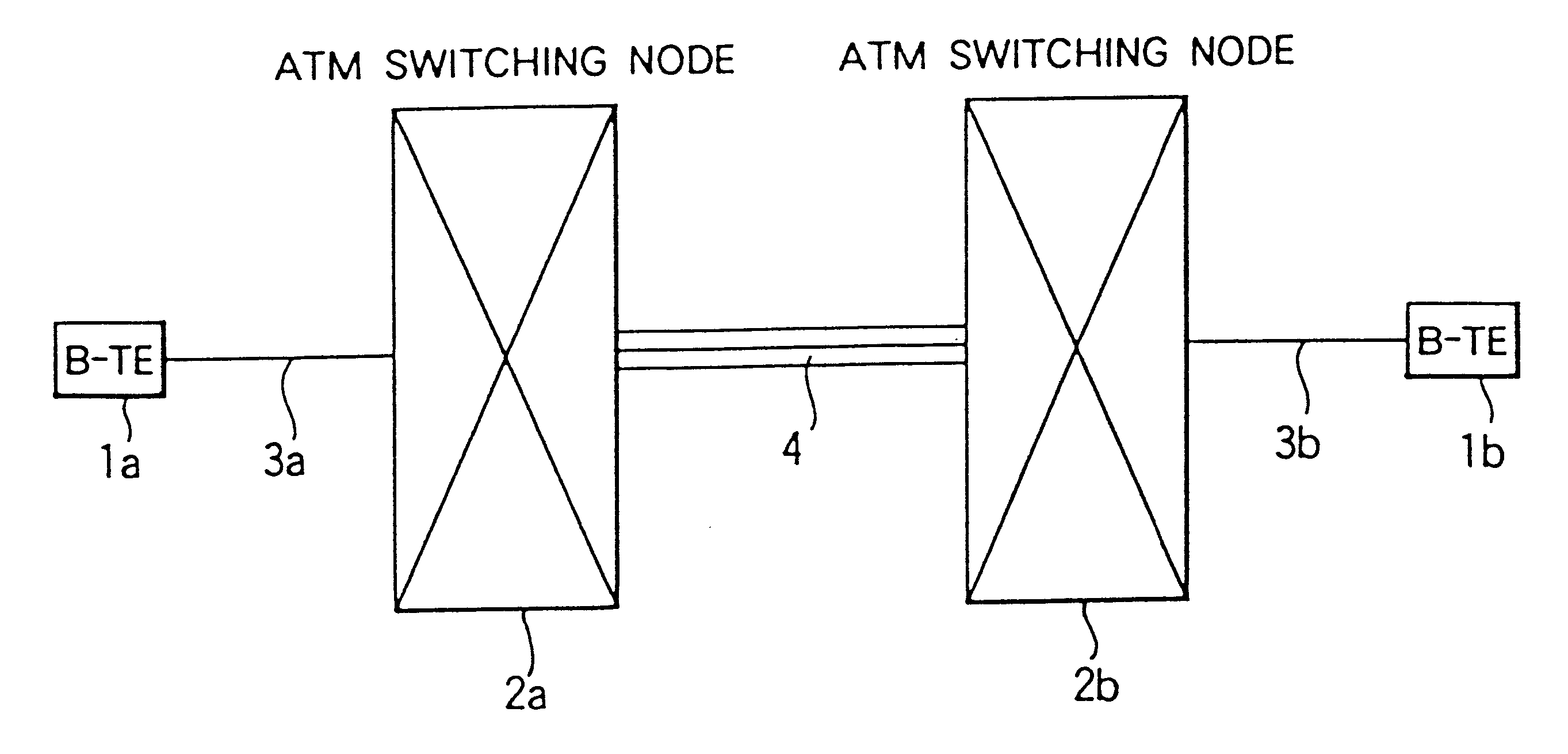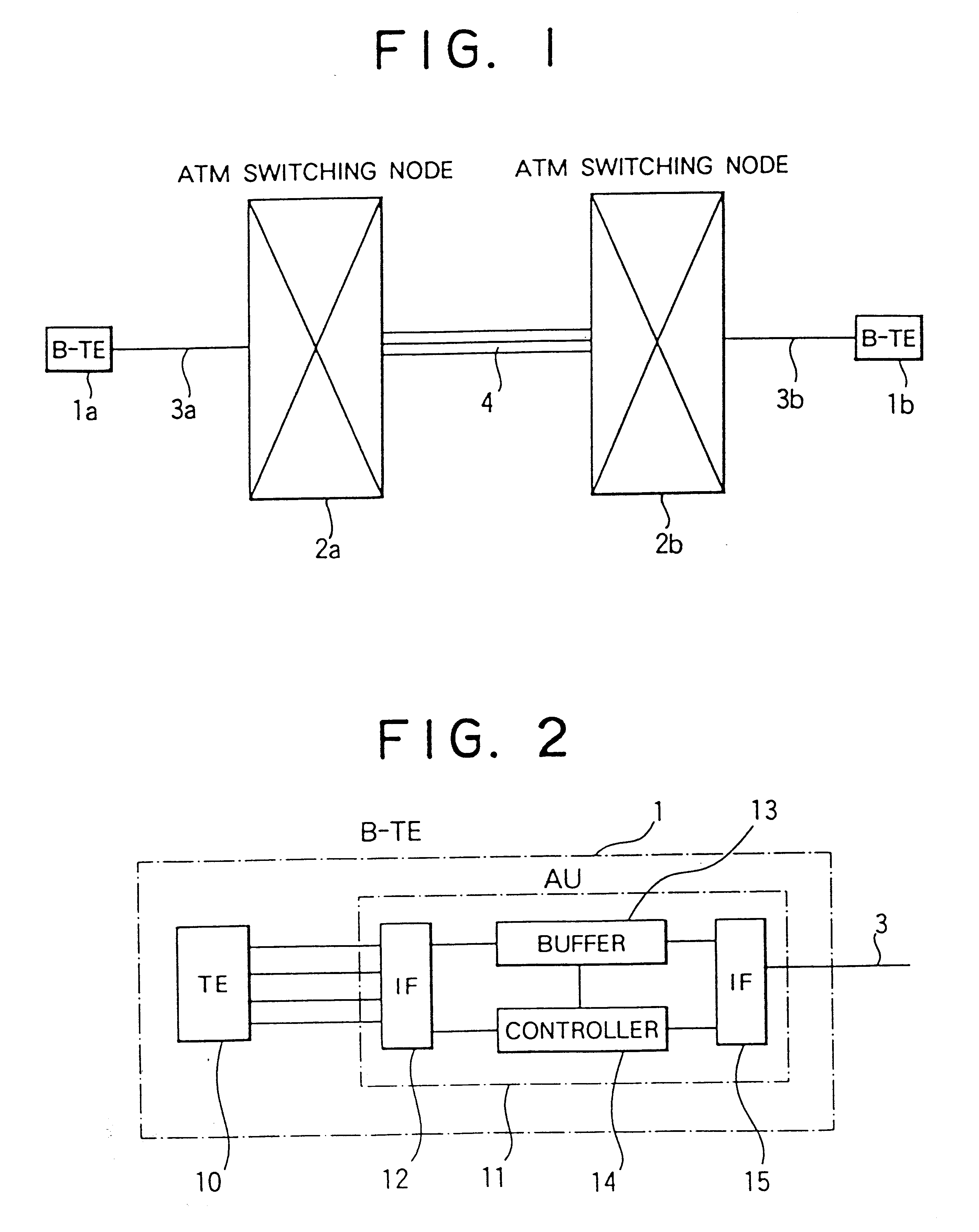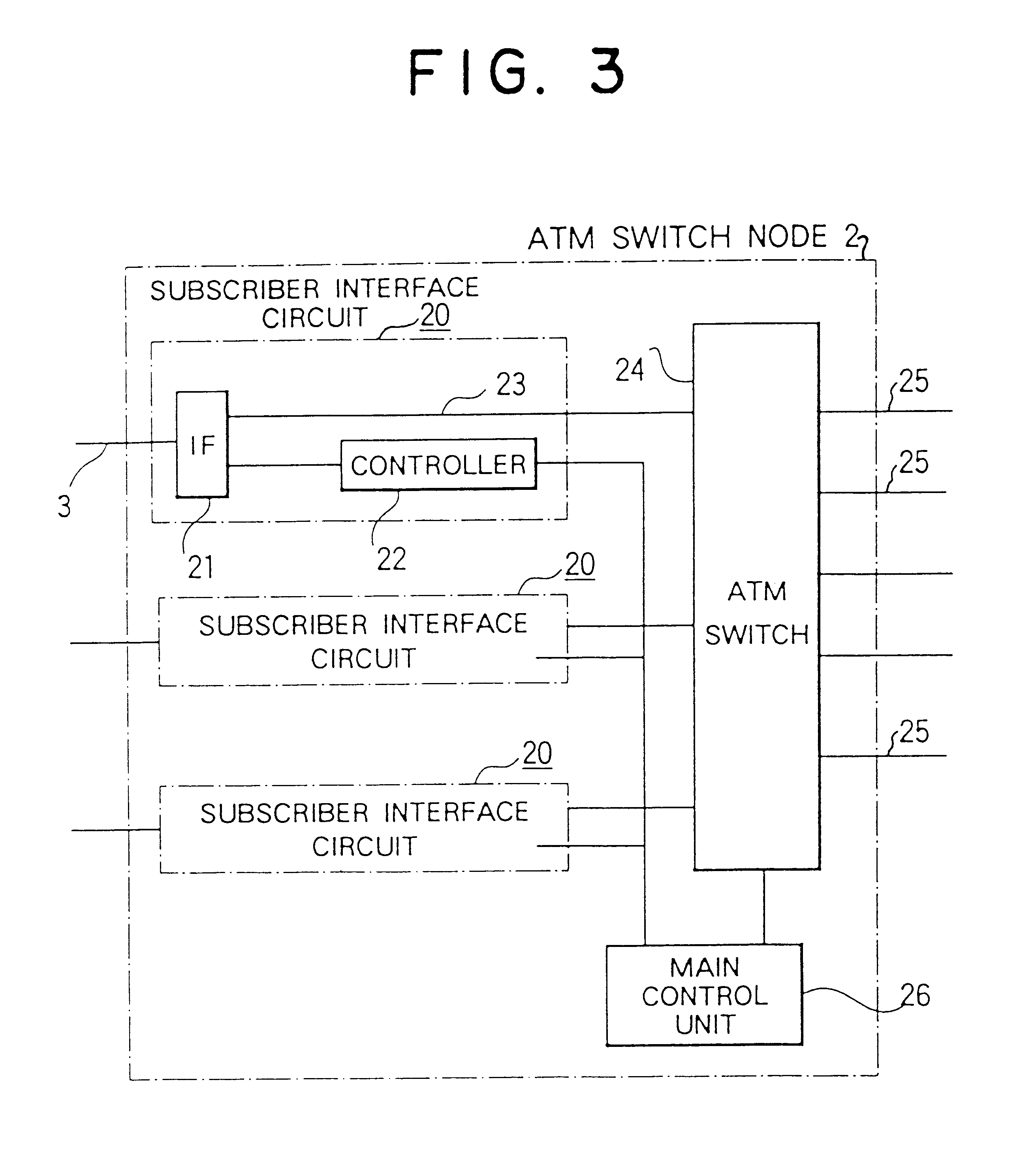However, if such a
cell buffer cannot store the cells which stay in the network, they will be lost.
However, when the
cell discard is performed, since the
receiver side cannot know the transmission of cells, it cannot request the
retransmission of the cells to the sender side.
However, since calls in the classes A and B should be transmitted in real time, it is substantially difficult to restore cells which are lost by the
retransmission.
However, besides the discard of the normal cells (those which are neither violation cells nor non-priority cells), the discard of violation cells will result in critical problems.
In other words, the information received by the network may be lost.
In addition, the sender side cannot know what and how much information is lost.
To prevent that, a prudent and honest user will always have to declare the attribute data with an allowance although he or she knows that the communication fee will becomes expensive.
Whenever the user repeats success and failure in the negotiations with the network, his or her action will escalate.
The increase of such users causes the traffic in the network to be abnormally increased and thereby loosing ordinal cells transmitted by prudent and honest users.
Thus, the users have suspicion and apprehension about the network.
As the traffic is heavy, probability of occurrence of a
cell discard will become high.
Thus, the network will become congested.
In other words, the cell discard will result in deteriorating the stability of the network.
As the capacity of the switch (the scale of ATM switch) becomes large and / or the number of relays in the network increases, the amount of
delay increases.
In addition, the amount of
delay varies depending on the traffic condition in the network.
However, when a call passes through a plurality of
relay switch nodes, since each
relay switch node individually performs the terminating process, line obtaining process, and originating process, the
connection time becomes much longer.
However, in a computer communication where information is intermittently transmitted, if a call connection takes a time on the order of seconds whenever the information is transmitted, the performance of the computer cannot be satisfactorily used and thereby the
operability of the
system is degraded.
However, when one
computer terminal equipment is connected directly to the broadband ISDN network, for example in the case where a remote user accesses a central data base, if a path is held in the class D for a long time, it cannot be operated in commercial basis because information is intermittently transmitted as was described earlier.
Thus, an expensive communication fee will be applied to each user.
In other words, it is suggested that the ordinary users frequently issue call connection requests in the network and thereby it tends to be congested and loose the stability thereof.
However, unless the broadband ISDN network effectively operates the communication resources at inexpensive cost and provides connection-less services with a
light load thereof or reduces a call
connection time to the same level as the connection-less services, it will not be able to attract the ordinary
computer users which expectedly have huge latent demands (although LAN connection users are limited only to major companies and the like).
It will be very difficult for the ordinary users to correctly understand the meaning of the attribute data and to correctly estimate and declare to the network each parameter value with respect to the call to be made.
Although the network obtains a communication resource in accordance with declared data, each user can unidirectionally send cells to the network regardless of the declared data.
Another problem for materializing the broadband ISDN is how to establish with flexibility suitable for various communication needs of the users the
declaration method and operation method of attribute data which do not adversely affect the stability and the like of the network even if the declared data contains errors and false data.
However, depending on the charging method being set, it will remarkably affect the stable operation of the network and the design of the communication equipment such as switches.
Such a buffer remarkably disturbs the production of
large capacity of the ATM switch LSIs along with the suppression of variation of
cell delay.
By reconsidering the method suitable for the broadband ISDN, if the storage capacity of the buffer were be remarkably reduced, the effect will unexpectedly become large.
However, only with such improvements, many problems and subject involved in the broadband ISDN network at the present time cannot be comprehensively solved unlike the present invention.
Thus, it is difficult practically to accomplish the above mentioned object.
Thus, the users will not satisfy the network system at the present time.
In addition, by randomizing arrival intervals of cells which enter the network (or an ATM switch), the
burstiness of cells disappears and thereby remarkably reduces the storage capacity of the buffer of the ATM switch.
 Login to View More
Login to View More  Login to View More
Login to View More 


